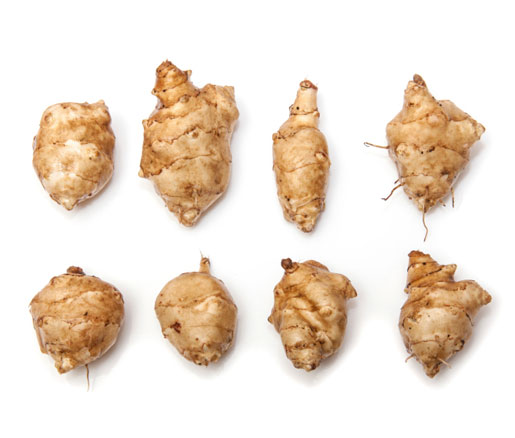
WHAT? A member of the sunflower family, this unusual vegetable, native to North America, can grow to be ten feet tall. Sunchokes are also known as Jerusalem artichokes, although they've got nothing to do with the Holy Land and they certainly aren't artichokes. The origins of its etymology are as varied and gnarled as this tuber’s skin. Some suspect that the Italian word for sunflower, girasole, tumbled through a game of telephone to become Jerusalem. A marketing scheme took this confusing nomenclature, combined it with the bulbs’ light artichokey flavor, and the “Jerusalem artichoke” was born. But the eccentric titles don’t end there: the sunchoke has also been nicknamed the “fartichoke.” Julia Child once said, “I just love those Jersualem artichokes. But is there anything you can do about the flatulence?” The sunchoke’s high starch content is the culprit (and also a natural remedy for diabetics).
Thankfully, these monikers have been eclipsed by this vegetable’s versatility. Sunchokes can be eaten raw, cooked like potatoes, or pickled, although we’re seeing a much wider spectrum of preparations today, both savory and sweet. We’re happy to see chefs embracing it: an 1880 New York Times article says that “the intelligent gourmet delights in [the sunchoke], for it faintly recalls the truffle.”
WHERE? Philly Star
WHEN? January 29, 2015
HOW? Sunchoke Custard with Black Walnuts and Cider Apples






